Creating the First Draft of the Stanford Disability and Disability Rights Advocacy Timeline: A Stanford Archives & Stanford Historical Society Summer Project

The Stanford Disability and Disability Rights Advocacy Timeline was started in the summer of 2023 with funding and support provided by the Stanford Historical Society (SHS) and the Stanford University Archives.
The timeline builds on the oral histories conducted in 2020-2023 through the Disability at Stanford Oral History Project. Below we interview research interns Madison Bunderson, a Ph.D. candidate in Education, and Amari Dezbah Pierce, a rising senior, about their experiences creating the timeline and their hopes for how the timeline might be consulted and expanded in the future.

Interviewer: Can you please tell us more about yourselves and what interested you about the project?
Amari: Hi! My name is Amari Pierce. I came to Stanford as an undergraduate student in 2019, and am currently pursuing a degree in Symbolic Systems. I started getting involved in the disability community at Stanford a couple of years ago, and currently, I am the Assistant Coordinator for the DisCo Space (Disability Community Space), and am involved in NSSP, which is a neurodiversity community student group.
I first saw the project when Josh reached out to me over email to spread the word about it. Before this, I met Josh over email to talk about working on a Stanford Disability history teach-in for students. So when he reached out about the project, I thought it would be really interesting! While working at DisCo, I had the opportunity to hear from older community members about their experiences and understanding of disability history at Stanford, especially in relation to the establishment of DisCo. What I learned from everyone was really interesting, and also pretty limited and broad; so getting to seek out the history in more detail seemed like a really exciting chance to get to know where I, DisCo, and the community come from.
Madi: My name’s Madison Bunderson, better known as Madi. I started my doctoral degree at the Stanford Graduate School of Education in the fall of 2020, where I study narrative engagement, neuroscience, and dis/ability. The posting for this summer internship was forwarded to my fellowship cohort by our supervisor, Elizabeth Kozleski because she thought a few of us might be interested. I definitely was–I’d been thinking a lot in the spring quarter about disability at Stanford while I was a TA for the course “Biosocial-Biocultural Perspectives on Disability in Education”. I gave a mini-lecture on the history of eugenics and included some of Stanford’s role in that field, and one of my students asked me if I had other examples of disability history at Stanford. Aside from the things that had happened since I started my degree and what I’d prepped for the lecture, I had nothing! So when the opportunity presented itself to learn more about the history of disability and advocacy at Stanford, I couldn’t pass it up.
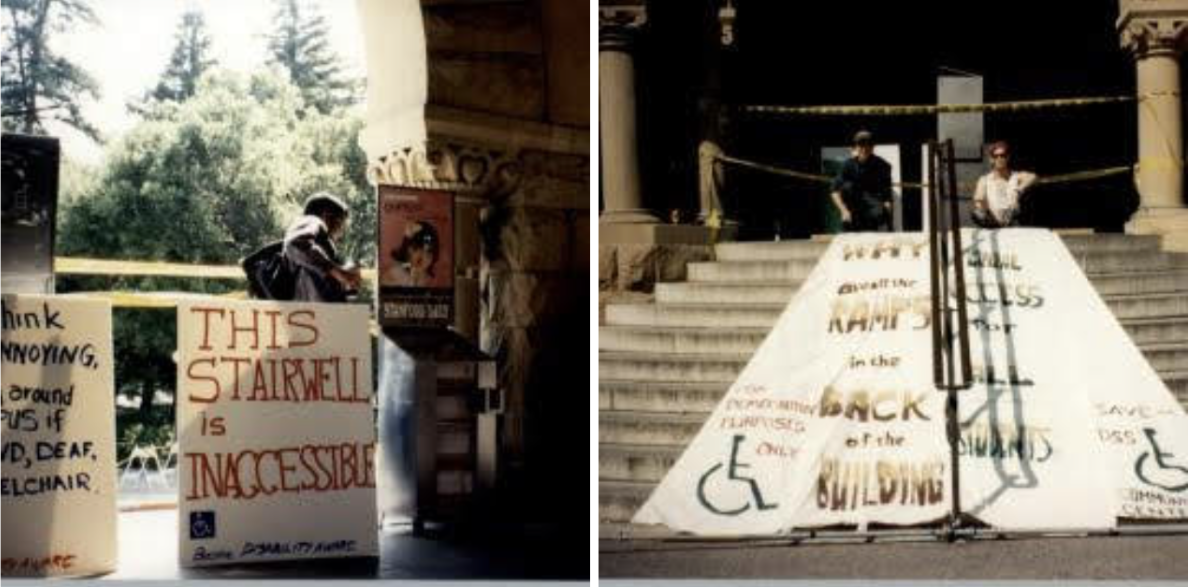
Interviewer: What were the biggest challenges you faced in putting together the Timeline?
Madi: For me, there are two challenges that stuck out. The first I think is common to any sort of historical project or research–it’s about how little details disappear over time, and tracking them down now is easier said than done. For example, there was one student who was mentioned multiple times in the Stanford Daily Archives, but each time he was mentioned his dates of attendance were different (with no rhyme or reason as to why it suddenly changed). It was impossible to nail down exactly how long he’d been at Stanford and when, so we ended up having to use less certain language about how long he was “reported” to be here. Similar issues happened when someone’s name was misspelled, or an office title changed without any formal announcement about it–we had to make peace with writing “it’s unclear” for some details on the timeline. The second challenge that I found myself dealing with as we added things to the timeline was trying to figure out what should be included. Our team had set the expectation at the beginning of the summer that we would be as inclusive as possible. If someone was looking at some facet of disability at Stanford–whether it was about eugenics, 504 construction, disabled athletes, whatever it might be–we wanted to try and get just a bit of it onto the timeline. As you might imagine, a full and completed timeline of that scale doesn’t happen in a summer. We continued to revisit the question of “what do we include” in our weekly meetings and it was difficult to draw boundaries around our events. Did we want to add events that involve alumni during their time after Stanford? What about non-Stanford events that Stanford community members attend? Each time, we could come back to the core of our project goal: to try and capture as much as possible. We had to be comfortable with the fact that we might be including one non-Stanford event that a Stanford professor went to while missing another. It’s a limitation of the timeline, really, but it’s also a product of this type of work–we can’t be fully comprehensive no matter how hard we try. We decided that we had to be okay with that if we wanted to ever release any sort of product.
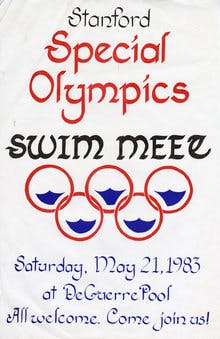
Amari: Similar to what Madi mentioned, I think the first challenge for me was finding information. Like she said, misspellings and name changes are things we had to navigate when pinpointing important people, organizations, and events to put in the timeline; and because a lot of these were completely new to us, we had to just keep digging to find more information that might clarify documents that confused us. Personally, the process looked like first making broad searches to find any kind of information on people, events, or organizations; and then going into a “second level” of depth to learn more about the things I’d found in more detail.
Sometimes it was in the search for the specific “second-level-thing” that I’d find a new word, name, or term that looked, suspiciously, a lot like the “second-level-thing” I was trying to learn more about; and this would make me wonder whether it was actually the “second-level-thing” or something else completely. Other times, it was in a search for something unrelated that the “suspiciously-similar” term would come up and make me wonder. You really couldn’t anticipate where these things would come up, so being comprehensive was just something you had to keep digging for. And even so–we discussed this in our meetings–we had to try to come to terms with the thought that our timeline will never be completely comprehensive. You lose information to time, there’s always new perspectives to look at history from, and…what does a completely detailed history look like anyways?
Another challenge I had dealing with language had to do with finding information at the intersection of disability and racial minorities, and on sub-identities of disability. Specifically, this included what terminology to use to search the online archives in order to find what we were looking for. Sub-identities and racial minorities each have their own unique history with language that ties them to disability history, and considering how to use this language to find historical documents is something I had to think a lot about.
Interviewer: Were there any surprises?
Madi: Tons! There were so many things that were delightfully fun, random, and unexpected. Pretty early on in this project, I was interested in learning more about the history of what’s now known as the Lucile Packard Children’s Hospital at Stanford. Its history starts at the Stanford Home for Convalescent Children, which opened in Palo Alto in 1919 as a home for children with chronic illnesses. I went through a lot of old articles–digital and physical–and in one of the boxes I reviewed in the Special Collections reading room in Green Library, I found a folder that was all about Shirley Temple Black, a well-known child actress. I had no clue why it was there, and when I opened it I was fascinated to find out that Shirley Temple has a lot of ties to the Bay Area and Stanford. Her husband (Charles A. Black) was involved with the Convalescent Home, and her brother was an undergrad at Stanford. She was an auxiliary member of the Home and even donated some dolls! It was an entertaining piece of history to discover.
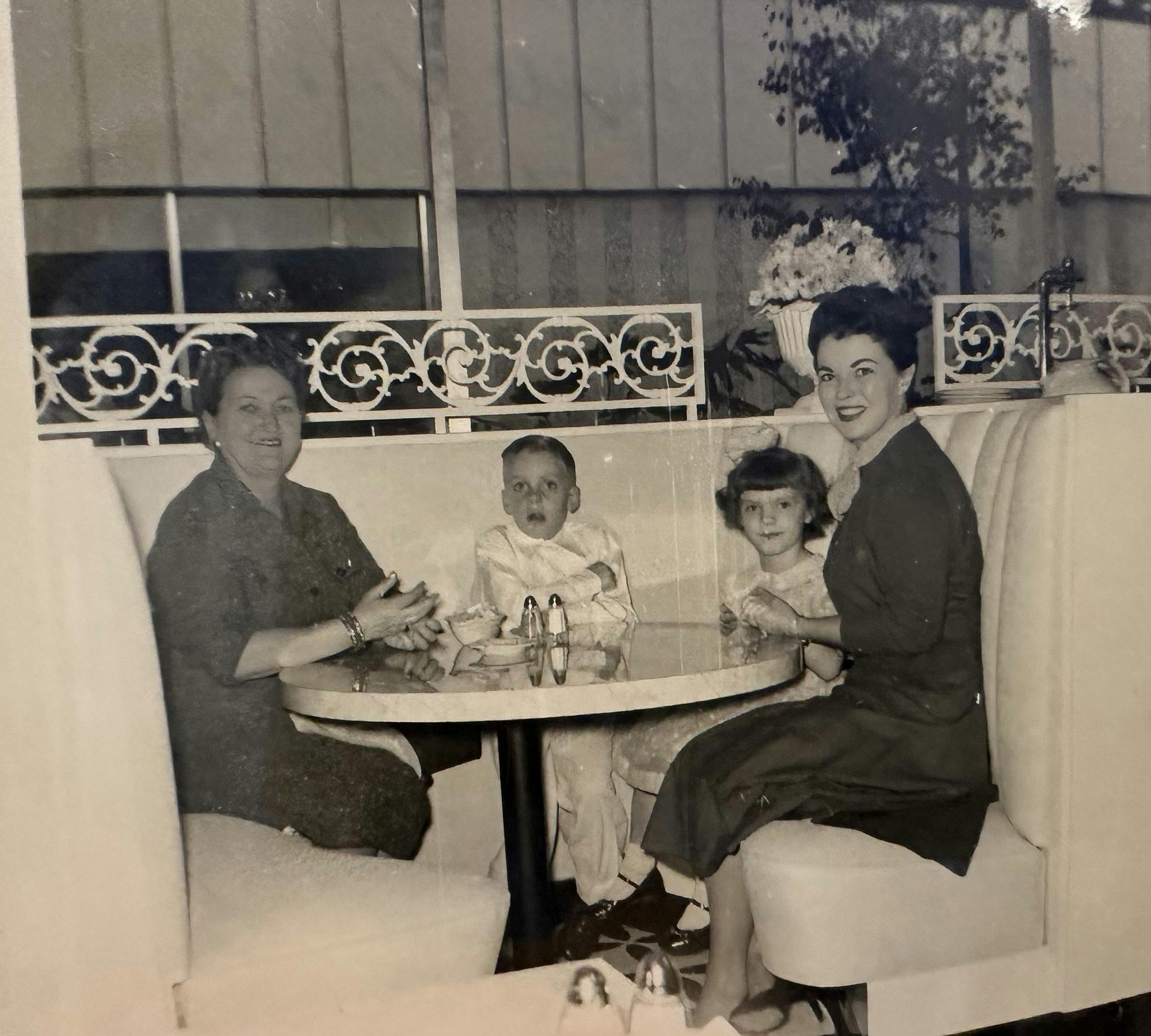
Another thing that intrigued me–maybe not necessarily surprised me–was how advocacy work by other groups in Stanford’s history is intricately intertwined with disability advocacy. Many disability justice activists now talk about how the history of how disability has been treated in relationship to other rights movements. It isn’t always a positive relationship, but sometimes they grow stronger and evolve because of one another. For example, the 504 Sit-In in San Francisco–considered a groundbreaking moment for disability rights–wouldn’t have been possible without the Black Panther Party’s support. I was interested in how I saw similar examples echoed in our timeline. One great event showed up in the 70s when the Stanford Gay People’s Union first proposed what they call a “human rights policy” that they wanted the University to adopt. They were pushing to expand protections beyond what Stanford currently had to include not only non-discrimination on the basis of sexual orientation, but also non-discrimination against anyone with a disability. This proposal actually was written before the 504 Sit-In, which was cool to see.
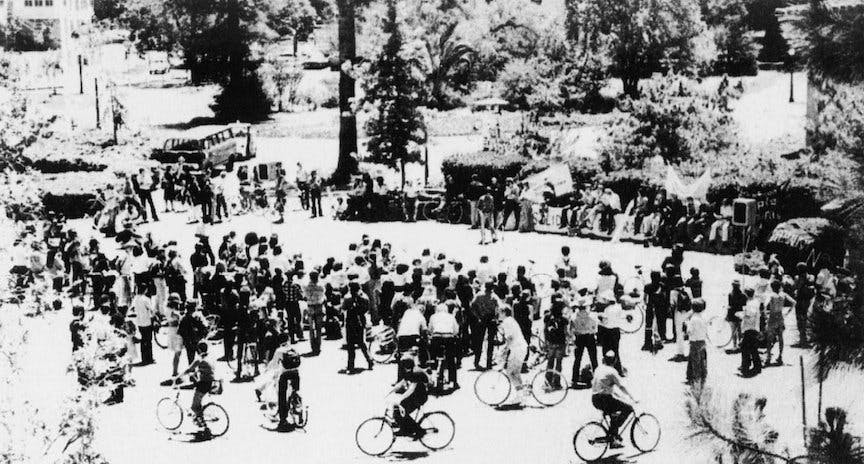
Amari: Yeah, definitely a lot of surprises! During our weekly meetings, this was a good chunk of what we talked about: all the new and exciting things we’d seen and learned. One of the biggest surprises was definitely the week Madi talked about all the things she’d found on Shirley Temple! I was always excited when Madi would mention that there were interesting things she’d found and would preface with the note that she didn’t have to talk about them in detail. We always asked her to say more because she always seemed to find the most interesting things!
Other cool surprises came in the form of all the VSOs and disability advocacy events we found! From what I’d learned about Stanford’s disability history, I, on the one hand, suspected that there must be a lot more advocacy that had been done in the past than any one person knew about; but on the other hand, I wasn’t sure how much was actually done. So because it seemed that no one knew otherwise, it felt like the recent history of activism in the past five, or so, years was all that there was.
But day after day, whether digitally or physically in the archives, we kept finding new organizations, people, relationships, and events. It was just mind-boggling to finally see at least a portion of the shoulders that the disability community has been standing on.
One of my favorite things to find was the Stanford student organization, Stanford Students for Deaf Awareness, which was active in the 1980s. They hosted an annual ‘Deaf Awareness Day’ event at Stanford, which included Professor Cathy Haas, and, in 1987, Joanna Greenberg, in a speaker event. And the organization also invited deaf actors to perform and be involved in Q&As. Another cool thing I learned about was a project in the 1960s, hosted by Stanford’s SRI’s Control Systems Laboratory, to develop a handheld braille machine that was expected to produce braille text after scanning over non-braille printed text. I wasn’t able to find a whole lot about the research’s evolution or whether it was completed successfully, but it was insane to learn about as something that was worked on in the 60s.

My final surprise I’ll note was the experience of being in the physical archives. It’s a big, silent space that felt sacred to be in, and this feeling was amplified by the experience of holding decades-old pieces of paper because it was surreal to be touching an original handwritten letter from the 1960s or 1920s. I would see and feel the flecks of ink, the misspelled, sloppy writing of people long gone, and think of how real their existence was. History, and the people in it, are often phantoms in my mind, and being in the archives brought them more to life.
The most letters I have ever gone through in my entire life were library correspondences from the Stanford Libraries’ former director from 1927-1947, Nathan Van Patten! And I feel like his sign-off will be iconically burned into my mind: “Very sincerely yours, Nathan Van Patten”. It’s simple, but has a ring to it.
Interviewer: What are your hopes for how the Timeline might be used?
Amari: I hope that it will be useful for reflecting on how far or near disability rights and the disability experience has come at Stanford, as well as just understanding how things have stood before and how they stand now. I think, without the timeline, being in the disability community sphere at Stanford can feel like having a vague understanding of there being at least some infrastructure for supporting disabled students, but that there is still generally more to be improved. It feels somewhat amorphous because it is not seated in the broader context of what has come before us. In this, I mean that you are without an understanding of what people’s experiences were like before you; what improvements or downturns have happened; what methods of advocacy were used and what their outcomes were; what community, safety, and unity, has looked like; and more.
If you are a disabled student at Stanford without a community of other disabled people, this can feel lonely and bleak to face the joys and barriers of your daily life because you are without community in both the present and past. So I hope that this timeline will in part serve to remind disabled people of our perpetual existence, and be a source of strength, solace, knowledge, and resilience.
I also hope that the history of disability at Stanford being made more explicit and accessible in this way will spur more interest and work in constructing more detailed timelines of disability history; and that this will also provide more attention and engagement to the experiences of disabled people, and allow for new intentional work on providing greater access.
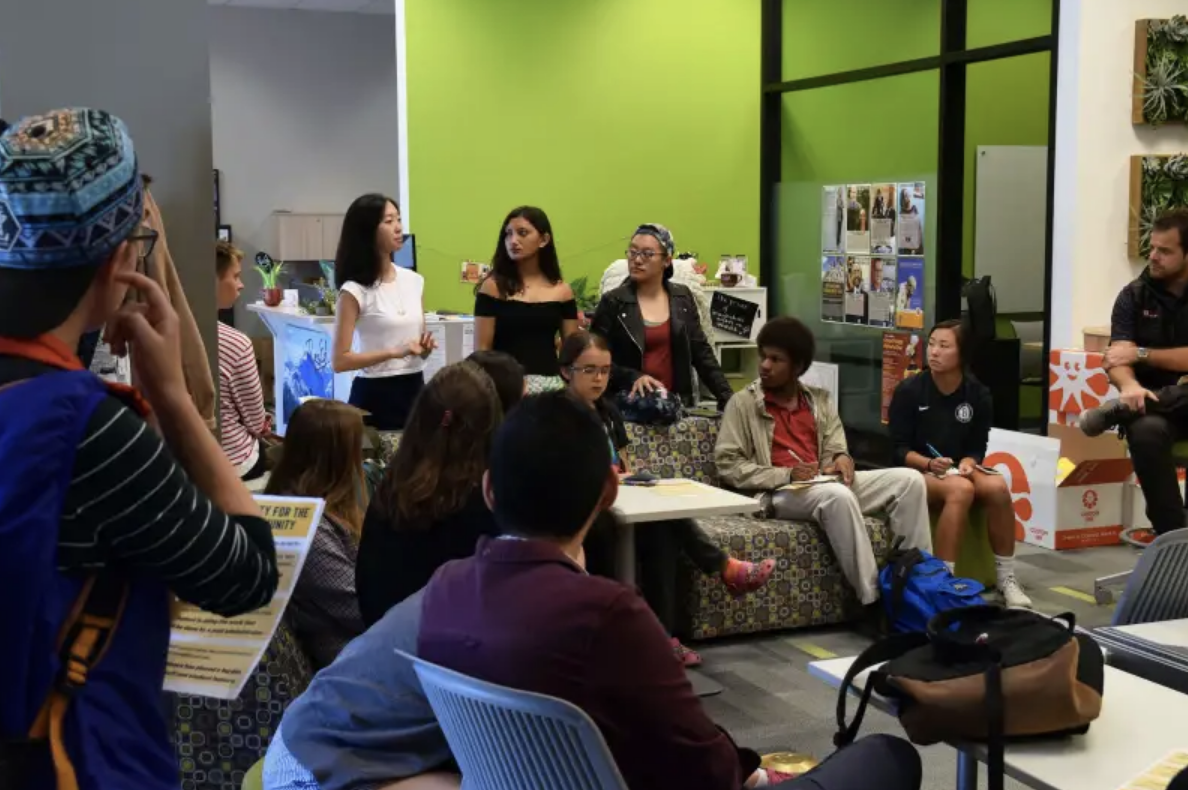
Madi: As someone who became interested in this project because I wanted the knowledge for my students, I hope that this can become an educational resource for folks who are interested in the Disability community. Aside from that, I have something a little more idealistic I’d like to share: I think that one of the challenges of understanding history as we’ve presented it in our timeline is that student advocacy at higher education undergoes intense, regular turnover. It’s easier to understand history when there’s someone stable who has been present for years and years–we’re lucky to have non-students like Cathy Haas at Stanford because she’s been involved as a lecturer and advocate for years. Students come and go much faster than staff, administrators, professors, and so on do–they come here, they get their degree, they might get another one, and then they leave. It makes it difficult to grasp the work of the students who come before us. But even if it feels like you’re fighting a battle alone, there is a legacy of people who have come before you who have been pushing for those disability classes, who have been advocating for that disability community space, who have handed that petition statement to an admin–and so I hope that seeing this timeline draft reminds today’s students that they get to build on a legacy of wins, losses, struggles, and joys that have come before them.

Interviewer: Anything else you want to share about your experience this summer?
Madi: I promise that I wasn’t paid to say this–but if anything that Amari and I have talked about involving either this project or in the Archives in general interests you, reach out! Both the Stanford Archives and the Stanford Historical Society were groups I’d never interacted with before this summer experience, and I’m grateful that I was able to be part of this project. I’m sure there will be more opportunities to come, and I’d wholeheartedly recommend exploring the Archives–new and old, digital and physical–if it calls to you.
Amari: Yes, good point, I agree. We are friendly, and would love to talk to you! And I recommend exploring the Archives regardless of if you have experience there or not. I am being very literal when I say that you can do this without prior experience, and can reach out to us, or at least me, for any questions about it. Also, I recommend getting involved in research with the Archives. This was my first time doing so and I would say I definitely feel a greater appreciation and thoughtfulness for the work of history, historians, and librarians. If you are interested in trying something new and learning a lot, I ten out of ten recommend.
Madison (Madi) Bunderson is a fourth-year doctoral candidate at the Stanford Graduate School of Education with a focus in Developmental and Psychological Sciences; her research combines narrative engagement and neuroscience. She is also a Leadership in System-wide Inclusive Education fellow, funded by the U.S. Department of Education’s Office of Special Education, which has led her to being a teaching assistant for multiple education courses in disability studies.
Amari Dezbah Pierce is a rising senior studying Symbolic Systems. She has been an Assistant Coordinator for the Stanford Disability Community Space (DisCo Space) since its opening, and is interested in language revitalization at the intersection of education and technology, accessibility, and, even more now, history!